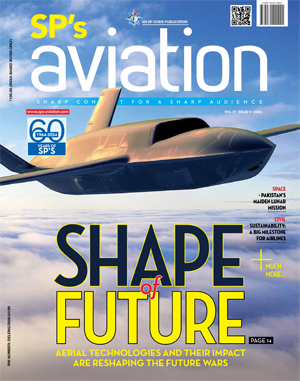INDIAN ARMED FORCES CHIEFS ON
OUR RELENTLESS AND FOCUSED PUBLISHING EFFORTS

SP Guide Publications puts forth a well compiled articulation of issues, pursuits and accomplishments of the Indian Army, over the years

I am confident that SP Guide Publications would continue to inform, inspire and influence.

My compliments to SP Guide Publications for informative and credible reportage on contemporary aerospace issues over the past six decades.
Paving The Way for ToT

It is clear that India will have to wait for many more decades before it can realise its publically much touted dream of attaining self-sufficiency to meet its defence needs
After havin g turned a deaf ear for more than seven years to the industry/original equipment manufacturers (OEMs), what has finally prompted the architects of the Defence Procurement Procedure (DPP) and the decision-makers in the Ministry of Defence to include transfer of technology (ToT) as an eligible component of the offset obligations in defence deals? The idea of making offset obligations for all defence deals costing Rs. 300 crore and more had germinated way back in 2005. The same had been crystallised within a year thereafter and became part and parcel of the DPP in its 2006 avatar. Briefly, the DPP 2006 contained three principal features—an offset clause, no single vendor purchases and compulsory transfer of technology in all big defence transactions. The offset clause had attracted the biggest attention as this applied to procurement proposals where a minimum of 30 per cent of all foreign defence deals above Rs. 300 crore were to be invested in the Indian defence industry. At the time of its initial formulation it was allowed to be in the form of setting up training facilities, sourcing components, technology sharing, or making use of IT services from India-based global service providers. The schemes for procurement from foreign sources were categorised as ‘Buy and Make’ with ‘ToT’ i.e. purchase from a foreign vendor followed by licensed production.
There were two serious handicaps though, in the entire scheme of things in the above arrangement. One, the offsets had to be discharged towards the Indian defence industry alone and; two, the ToT (mainly for licensed production under the ‘Make’ clause of ‘Buy and Make’) was to be free of cost and only related to the production know-how in terms of what was happening in the assembly line and sourcing of some nondescript components. That these were serious limitations was brought out time and again during the numerous seminars/workshops held in the capital city Delhi and elsewhere in the country, did not seem to have any effect on the decision-makers within the Ministry of Defence (MoD). The MoD continued to oppose the demand for ‘technology against offsets’ on the specious plea that it was not in a position to price the technology realistically. In the meantime, offset obligations of different vendors continued to pile up with each defence deal that was signed by the services.
Defence Minister A.K. Antony gave a resume in Parliament during the last session in May this year, listing out the defence contracts (including offsets) that had been signed since the beginning of 2007—after the offset clause came into being. In a written reply to the Member Parliament Manish Tiwari, he disclosed that 17 offset contracts had been signed till then. These included as many as 12 for the Indian Air Force (IAF). The remaining five were for the Navy (see Tables I & II).
Note: The Indian Army does not figure in the lists of offset contracts as it has so far not been able to conclude any defence deal with a foreign vendor since the promulgation of the ‘offset’ clause in defence deals.
Since the tabling of the above lists in Parliament, two more air force contracts have been signed relating to NGPGM and the Pilatus basic trainer aircraft. Even with the bare minimum of 30 per cent offset obligations against the main contract, the sum total for offset obligations in case of the IAF alone has far exceeded $3 billion ( Rs. 16,500 crore). If the Navy’s ‘offset’ obligations were also taken into account, the cumulative figure would easily approach of $5 billion ( Rs. 27,500 crore). This obviously is a huge amount, but would pale in comparison to the offset obligations connected with the IAF’s pending the medium multi-role combat aircraft (MMRCA) deal. The MMRCA contract is presumably in the last stages of commercial negotiations. When inked, it could attract an offset obligation of as much as $10 billion ( Rs. 55,000 crore) pegged as it is at 50 per cent of the total contract which some analysts suggest could touch $20 billion ( Rs. 1,10,000 crore).
It took a number of years for the MoD to understand the enormity of the offset obligations and the fact that the Indian defence industry alone would be unable to absorb such huge amounts of offsets. But instead of going in for bold reforms, MoD adopted a piecemeal approach, forever fearful of the government losing its tight central control in the defence sector. After a series of revisions, in the DPP 2011 version civil aerospace and internal security sectors were also added to the defence sector for discharge of offset obligations in defence deals. This did ease matters but only to a limited extent. Perhaps, it was the looming MMRCA deal which acted as a catalyst in removing the last hurdle to allow transfer of technology—in the true sense of it—to be accepted as an eligible option for the discharge of offset obligations.





